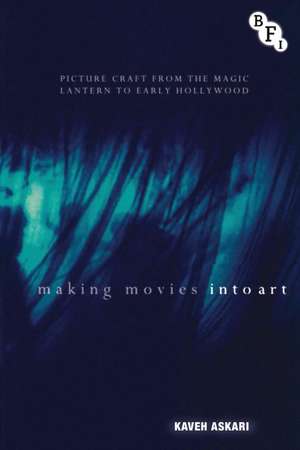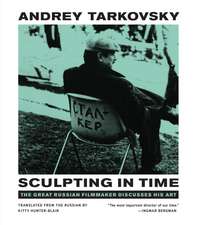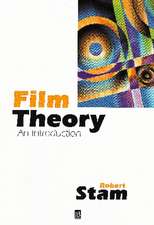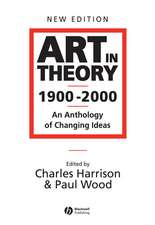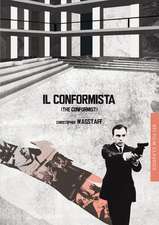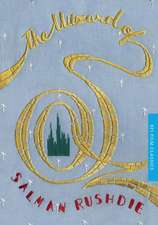Making Movies into Art: Picture Craft from the Magic Lantern to Early Hollywood: Cultural Histories of Cinema
Autor Kaveh Askarien Limba Engleză Paperback – 10 noi 2014
Preț: 223.67 lei
Preț vechi: 246.00 lei
-9% Nou
Puncte Express: 336
Preț estimativ în valută:
42.81€ • 46.52$ • 35.99£
42.81€ • 46.52$ • 35.99£
Carte disponibilă
Livrare economică 31 martie-14 aprilie
Preluare comenzi: 021 569.72.76
Specificații
ISBN-13: 9781844576951
ISBN-10: 1844576957
Pagini: 182
Dimensiuni: 155 x 235 x 14 mm
Greutate: 0.32 kg
Ediția:2014
Editura: Bloomsbury Publishing
Colecția British Film Institute
Seria Cultural Histories of Cinema
Locul publicării:London, United Kingdom
ISBN-10: 1844576957
Pagini: 182
Dimensiuni: 155 x 235 x 14 mm
Greutate: 0.32 kg
Ediția:2014
Editura: Bloomsbury Publishing
Colecția British Film Institute
Seria Cultural Histories of Cinema
Locul publicării:London, United Kingdom
Caracteristici
Relevant to multiple undergraduate courses, including Art History, History and Cultural Studies as well as Cinema and Film Studies
Notă biografică
Kaveh Askari is Associate Professor of Film Studies at Western Washington University, USA. He is the author of numerous articles on early cinema.
Cuprins
Acknowledgments.- Introduction.- Rewinding art cinema.- Situating cinema among the other arts.- Craft, picture, movement.- Aesthetic appreciation and the modernity of picture craft.- Chapter organization.- 1 Moving-picture Art before Cinema: Alexander Black and the Lyceum The amateur and the institute The detective lectures and the instantaneous tableau From 'the horse in motion' to 'man in motion' Picture play aesthetics: still pictures as moving pictures Picture play reception: art cinema without the cinematograph Conclusion: a history without an invention.- 2 Moving Pictures Imagine the Artist's Studio The mise en scène of the studio The moving image jumps the frame Trilbyana: Transformation and absorption Lejaren à Hiller's Never-told Tales of a Studio Triart Picture Company: From Trilbyana to art history Conclusion: patchwork methods, common goal.- 3 Cinema Composition: The University and the Industry Picture study: from the art lecture to the film lecture Movement, contemplation and the 'tableau' Managing tableaux: the economics of film spectatorship Beyond the tableau: inscribing movement Conclusion: moving pictures and new tendencies.- 4 Painting with Human Beings: Maurice Tourneur as Art-film Director In the atelier of Puvis Quality films, imported film-makers The Blue Bird: From The Yellow Book to the yellow press Conclusion: Tourneur after 1920.- 5 Rex Ingram's Art School Cinema The oldest art school and the newest art From exceptional style to cross-media appreciation Scaramouche, or convergence Conclusion: the limits of exceptional films Conclusion: Moving Forward from the Slow Movie.- Notes.- Index.
Recenzii
A major contribution to film history and theory, and film's relation to other media.
This enterprising work will ultimately transform our understanding of cinema's early artistic tendencies. Kaveh Askari's examination of how film intersected with academia, the lyceum circuit, and the art studio brings to light institutional connections that reveal novel functions for a medium struggling for cultural legitimacy.
This enterprising work will ultimately transform our understanding of cinema's early artistic tendencies. Kaveh Askari's examination of how film intersected with academia, the lyceum circuit, and the art studio brings to light institutional connections that reveal novel functions for a medium struggling for cultural legitimacy.
